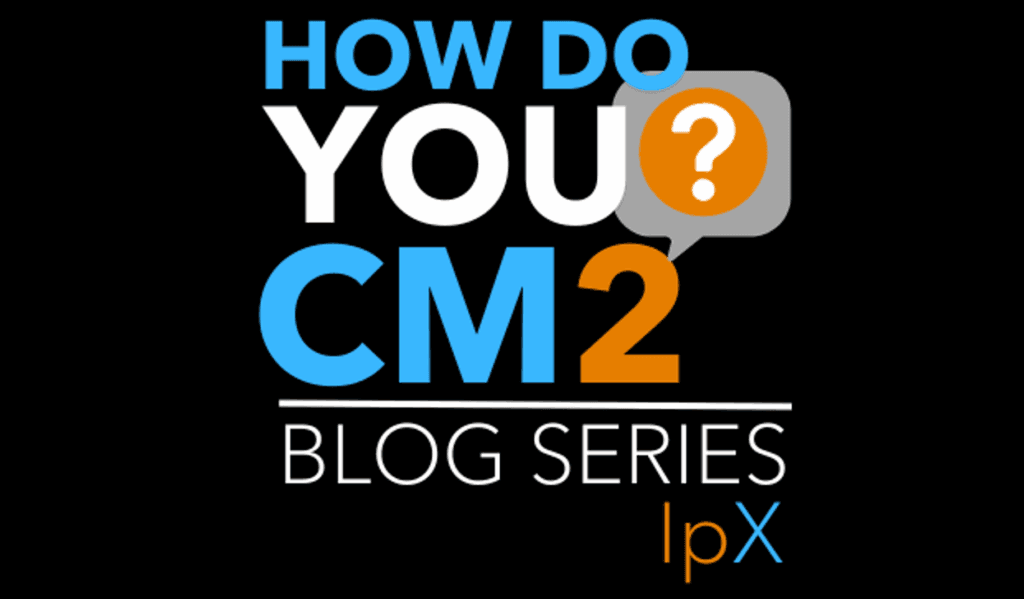

This article is part of the How Do YOU CM2? blog series in collaboration with the Institute for Process Excellence (IpX). Although I receive compensation for writing this series, I stand behind its content. I will continue to create and publish high-quality articles that I can fully endorse. Enjoy this new series, and please share your thoughts!

Let’s talk about a pattern I’ve seen in too many organizations, one that quietly kills morale and reinforces the wrong behaviors.
We all know the “heroes” who swoop in to save the day, the firefighters who work late, fix the crisis, just “duct tape” the problem, and get the applause. They’re often rewarded, promoted, and praised for rescuing the company from chaos, often by working outside of documented processes and business best practices.
Meanwhile, the people who prevent those fires, the ones who quietly ensure the process works, that changes are properly assessed, baselined, verified, and implemented, and ensure your product information is correct at all times, go unnoticed.
But here’s the uncomfortable truth:
When you reward people for cleaning up messes, you’re not killing the problem. You’re feeding it.
🔥 Every “hero moment” celebrated without addressing the root cause signals that it’s okay to bypass the process, as long as someone can fix it later.
💤 Every unrecognized engineer, analyst, or CM professional who did it right the first time learns that following the process doesn’t pay off.
⚙️ Every time we value speed over structure, we teach teams that prevention is invisible work.
🚨Keep adding patches to every problem; it will only work for a while before it really breaks, and the organization’s reputation is on the line.
🫣What often goes unnoticed is the impact this firefighting has on other planned work/projects that later require firefighting.
CM2 flips that script.
It creates a culture where firefighting becomes obsolete, not because people work harder, but because the process works smarter. It doesn’t have to be hard, just intentional guardrails.
✅ CM2’s closed-loop change process, paired with the CM2 Baseline, ensures problems are anticipated, contained, and prevented.
✅ It eliminates ambiguity, so no one needs to “hero” their way through chaos.
✅ It shifts recognition from “who saved the day” to “who made sure the day didn’t need saving.”
That’s not just process discipline, it’s a cultural transformation. One that fosters a sense of pride in one’s work and a responsibility for one’s own deliverables. Projects become more on time, and now that snowballs, and your valuable resources are working on planned, intentional work, not burned out.
So the real question is:
👉 Are you rewarding firefighters or fire prevention?
👉 Does your organization celebrate the chaos fixers or the quiet soldiers of consistency?
When CM2 is applied as an integral approach, heroes aren’t the ones who fix problems. They’re the ones who prevent them from ever happening.

Let’s be honest, when many people hear “Configuration Management”, their first reaction isn’t excitement. It’s usually something like:
- “That’s bureaucracy.”
- “That slows us down.”
- “That’s for documentation people.”
But here’s the irony: CM doesn’t slow you down; it prevents you from making stupid mistakes.
CM is a strategic function that exists to reduce cost, prevent delays, and make risks visible, ultimately enhancing project success. It’s the quiet discipline that ensures the product you think you’re building is the product your customer actually wants.
So why the bad perception? CM is often only experienced when it’s missing.
- When a release goes wrong.
- When engineering changes conflict.
- When quality issues ripple through production.
- When teams argue about “which version is right.”
When CM is working perfectly, nobody notices; everything just flows. CM ensures that all key players-design, manufacturing, suppliers, and customers-are on the same page, leading to a harmonious and efficient process. No drama. No chaos.
But when CM fails, everyone feels it.
Here’s the truth:
✅ CM doesn’t stop innovation; it enables it.
✅ CM doesn’t add red tape; it removes rework.
✅ CM turns chaos into control.
In a CM2 environment, people aren’t punished for making mistakes; they’re empowered not to repeat them. Stop pointing at people; instead, focus on solving systemic issues.
It’s the difference between firefighting and future-proofing.
The real question we should be asking is not “Why do we need CM?” but rather, “Why wouldn’t you want to prevent preventable mistakes?”
💡 If Configuration Management is the discipline that quietly saves your projects, then CM2 is the framework that makes it scalable, sustainable, and simple.
Let’s change the narrative.
CM isn’t the villain of speed, CM is as fast as you make it. Your organization setup and governance determine how fast CM will be. So stop blaming CM, organize yourself for change and benefit from the guard rails CN provides while you are speeding over the highway of innovation.
👉 How do YOU CM2?
What’s the biggest misconception you’ve encountered about Configuration Management? How do you think CM2 can change these perceptions? We’d love to hear your thoughts and experiences.

What is the quality level of the product data in your organization?
- 🤥100%? — You’re lying to yourself.
- ✅99%? — Hard to believe.
- 🆗95%? — Impressive, but not enough.
- ❌Less than 95%? — That’s the reality for most organizations.
I encountered a company where 70% of spare part data had at least one incorrect attribute value. They didn’t even know which ones, not without a deep investigation.
How valuable is that data?
👉 Exactly. Not at all.
Poor-quality data multiplies. Every time it’s reused, copied into another system, referenced in a design, or used to train an AI model, the errors compound. And when those flawed data sets fuel your “AI-driven product innovation,” you’re not accelerating insight… you’re accelerating inaccuracy.
And let’s not forget confirmation bias.
People want to believe that AI, automation, and “digital transformation” are working, but data often tells another story. In one study, experienced open-source developers completed 246 tasks to measure AI-assisted performance.
📈Economic and ML Experts predicted about 40% efficiency gains.
📈Developers, both during and after the study, predicted about 20% efficiency gains.
📉The observed results? A 20% efficiency loss.
You cannot blindly trust that AI is going to solve all your problems. You have to be smart about it and make data-driven decisions, based on high-quality data. And that’s where Enterprise Configuration Management (CM2) comes in.
CM2 isn’t about managing your data; it’s about curating it.
It establishes the framework to ensure every piece of product information, from requirements to test results, is identified, linked, owned, validated, and released. Resulting in complete, correct, current, and compliant data every single time.
Without that foundation, your digital twin becomes a digital hallucination; a model that looks right but behaves wrong. Is your digital transformation actually working for you, making your day-to-day business efficient and effective, or is it something only for leadership to perceive as progress? Do your metrics tell you the truth?
So, ask yourself:
🔹 How much of your data can you truly trust?
🔹 How much of your AI output is based on assumptions, not accuracy?
🔹 And how do you CM2?
Let’s talk about it.👇
Check out the other How Do YOU CM2? posts.
Copyrights by the Institute for Process Excellence.